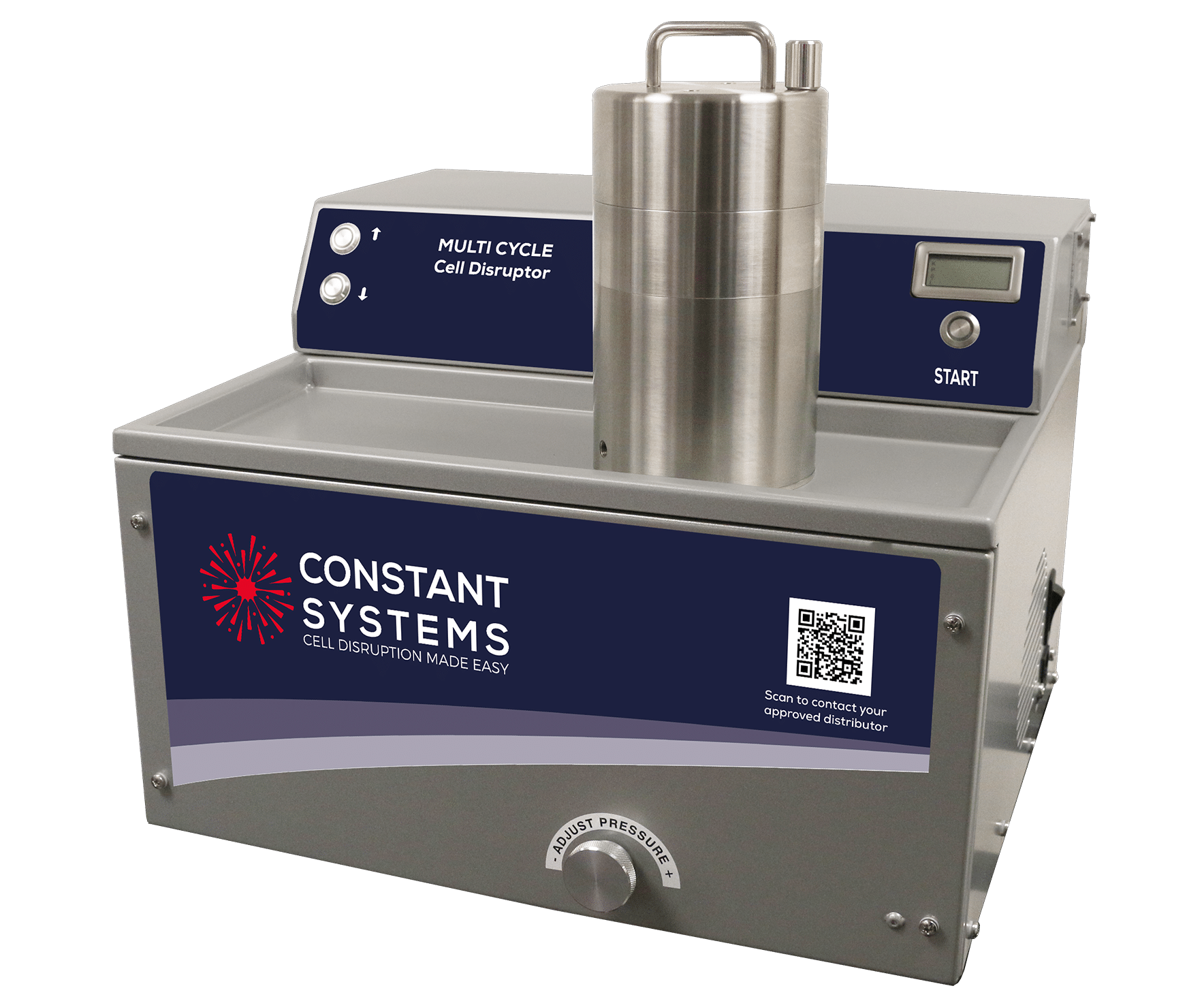BETTER THROUGH DESIGN
Differences between Homogenisers and Cell Disruptors.
Homogenizers and cell disruptors are both used in laboratory and industrial settings to break down materials and cells, but they have distinct mechanisms, applications, and benefits.
Homogenizers
Mechanism:
- Homogenizers work by applying mechanical force to mix and emulsify substances. They use high-pressure fluid dynamics to create a uniform mixture.
- Types of homogenizers include high-pressure homogenizers, rotor-stator homogenizers, and ultrasonic homogenizers.
Applications:
- Creating emulsions and dispersions.
- Homogenizing liquids to ensure consistency.
- Processing food and beverages for smooth textures.
- Formulating pharmaceuticals and cosmetics.
Benefits:
- Efficient mixing and emulsification.
- Produces uniform particle size distributions.
- Suitable for continuous processing.
Limitations:
- Not specifically designed for breaking cell walls or membranes.
- Limited effectiveness for tough or resilient cells.


Cell Disruption - with Constant Systems Equipment
Mechanism:
- Constant Systems’ cell disruption technology utilizes a unique, controlled pressure release mechanism to achieve cell disruption. The cell suspension is passed through a single fixed orifice under high pressure, and the sudden decompression causes cells to break apart due to precisely controlled shear forces and cavitation.
- Unlike conventional high-pressure homogenizers and French presses, Constant Systems’ equipment offers a more consistent and reproducible process, ensuring uniform cell disruption.
Applications:
- Ideal for efficient disruption of bacterial, yeast, and mammalian cells, enabling the release of intracellular contents with high precision.
- Widely used in biotechnology, pharmaceutical, and research industries for applications requiring reliable, reproducible from very small to large-scale cell disruption.
Benefits:
- Provides superior efficiency with the ability to process small and large volumes of cells rapidly while maintaining consistency across batches.
- Especially effective on cells with tough walls, including those resistant to conventional homogenizers.
- Offers precise control over the disruption process, reducing the risk of heat generation and protecting heat-sensitive molecules.
- Minimal contamination risk, making it suitable for sensitive applications requiring high purity.
Key Differences
Purpose and Design:
- Homogenizers: Primarily designed for mixing, emulsifying, and reducing particle sizes in liquids.
- High-Pressure Cell Disruption: Specifically designed for lysing cells to release intracellular contents.
Mechanisms:
- Homogenizers use high-pressure fluid dynamics or rotor-stator mechanisms.
- High-Pressure Cell Disruption: uses a precisely controlled mechanical method to break cell walls and membranes.
Applications:
- Homogenizers can be more versatile for general processing needs.
- High-Pressure Cell Disruption: is specialized for biological and biochemical applications, focusing on cell lysis under highly controlled conditions.
Effectiveness on Cells:
- Homogenizers are less effective at breaking down tough cell walls.
- High-Pressure Cell Disruption: is highly effective and can be optimized for different cell types and desired outcomes.
Control and Precision:
- High-Pressure Cell Disruption: offers more precise control over the disruption process, minimizing damage to intracellular components and allowing for the extraction of functional biomolecules.
Advantages over Conventional Homogenizers
- Generates less heat, though offering instant cooling during the disruption process, thus preserving the integrity of heat-sensitive proteins and nucleic acids.
- Reduced shear stress compared to traditional methods, lowering the risk of protein and nucleic acid degradation.
- Requires less frequent maintenance and offers higher reliability due to the robust and precise design of the equipment.
- Delivers more reproducible results, critical for processes where consistency is paramount.
Constant Systems’ equipment is designed to overcome the limitations of conventional homogenizers, offering a more efficient, reliable, and gentle approach to cell disruption.
In summary, while homogenizers are valuable for general mixing and emulsification, cell disruptors provide the specialized capability to effectively lyse cells and release intracellular materials. This makes cell disruptors essential tools in biological and biochemical research where the extraction of intact and functional intracellular components is critical.
Conclusion
Constant Systems Advanced Technology Combats Cell Disruption Challenges
Constant Systems’ advanced cell disruption technology plays a crucial role in enhancing the efficiency, reproducibility, and scalability of cell disruption processes. By addressing key challenges in this critical area of research, they empower scientists to achieve more reliable and comprehensive results, facilitating advancements in drug discovery, protein characterization, and a broader understanding of cellular mechanisms.




